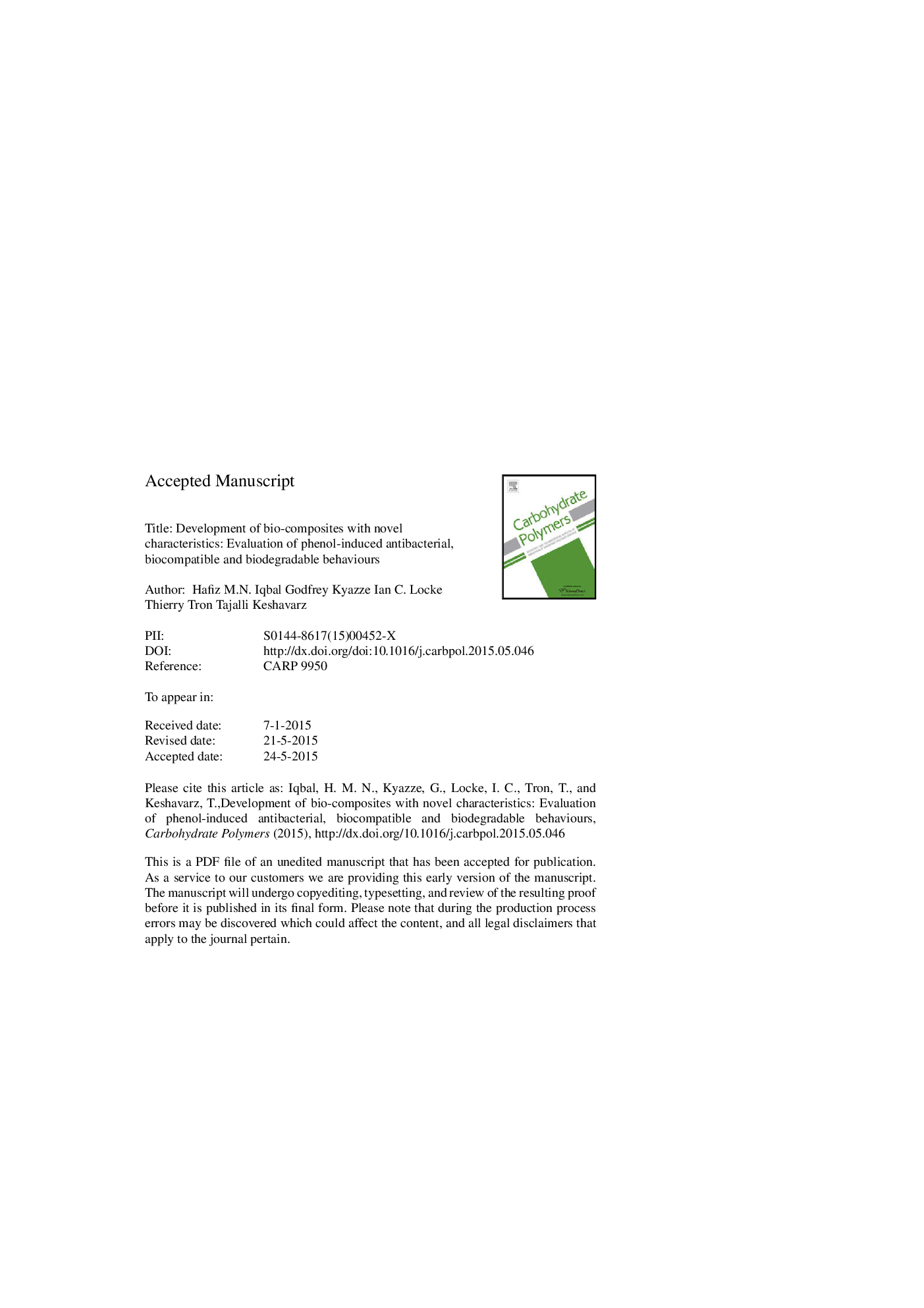| Article ID | Journal | Published Year | Pages | File Type |
|---|---|---|---|---|
| 7787721 | Carbohydrate Polymers | 2015 | 32 Pages |
Abstract
This paper describes a laccase-assisted grafting of gallic acid (GA) and thymol (T) as functional entities onto the previously developed P(3HB)-g-EC composite. GA-g-P(3HB)-g-EC and T-g-P(3HB)-g-EC bio-composites were prepared by laccase-assisted free radical-induced graft polymerisation of GA and T onto the P(3HB)-g-EC based composite using surface dipping and incorporation technique. The results of the antibacterial evaluation for the prepared composites indicated that 15GA-g-P(3HB)-g-EC, 15T-g-P(3HB)-g-EC and 20T-g-P(3HB)-g-EC composites possessed the strongest bacteriostatic and bactericidal activities against Gram-positive Bacillus subtilis NCTC 3610 and Staphylococcus aureus NCTC 6571 and Gram-negative Escherichia coli NTCT 10418 and Pseudomonas aeruginosa NCTC 10662 strains. In this study, we have also tested GA-g-P(3HB)-g-EC and T-g-P(3HB)-g-EC bio-composites for their ability to support and maintain multilineage differentiation of human keratinocyte-like (HaCaT) skin cells in-vitro. From the cytotoxicity results, the tested composites showed 100% viability and did not induce any adverse effect on a HaCaT's morphology. Finally, in soil burial evaluation, a progressive increase in the degradation rate of GA-g-P(3HB)-g-EC and T-g-P(3HB)-g-EC bio-composites was recorded with the passage of time up to 6 weeks. In summary, our current findings suggest that GA-g-P(3HB)-g-EC and T-g-P(3HB)-g-EC bio-composites are promising candidates for biomedical type applications such as skin regeneration, multiphasic tissue engineering and/or medical implants.
Keywords
Related Topics
Physical Sciences and Engineering
Chemistry
Organic Chemistry
Authors
Hafiz M.N. Iqbal, Godfrey Kyazze, Ian C. Locke, Thierry Tron, Tajalli Keshavarz,
